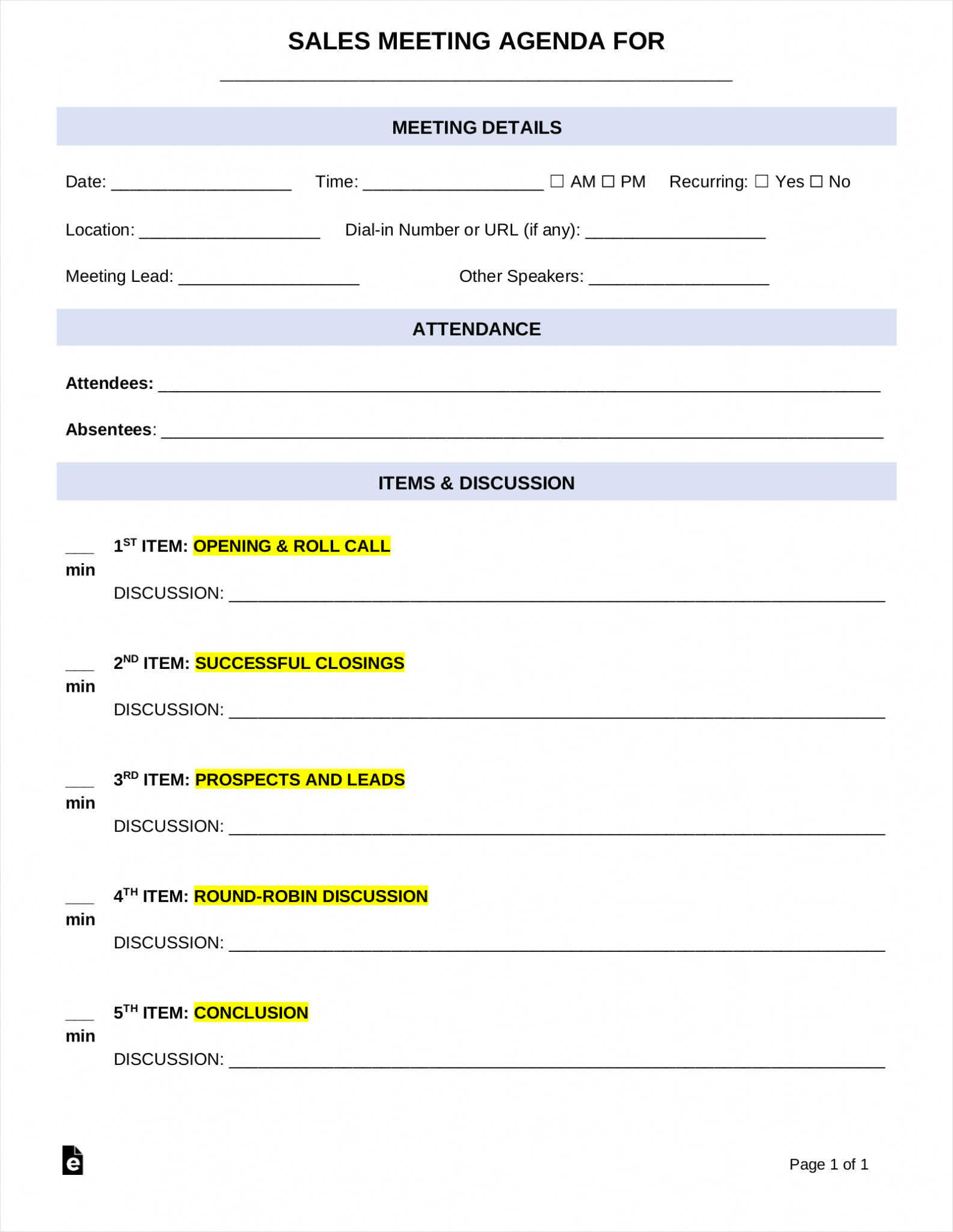When it comes to sales meetings, having a well-planned agenda is essential for ensuring a productive and successful gathering. A sales meeting agenda provides structure and direction to the meeting, allowing participants to stay focused and achieve the desired outcomes.
In this guide, we will explore the importance of a sales meeting agenda and provide you with tips and strategies for creating an effective one.
Why is a Sales Meeting Agenda Important?
A sales meeting agenda serves as a roadmap for the meeting, outlining the topics to be discussed and the objectives to be achieved. It helps to ensure that everyone is on the same page and that the meeting stays on track. Without a clear agenda, meetings can easily veer off course, wasting time and leaving participants feeling unproductive and frustrated.
By having a well-defined sales meeting agenda, you can:
- Set clear expectations for the meeting
- Ensure that all necessary topics are covered
- Allocate appropriate time for each agenda item
- Keep the meeting focused and on track
- Maximize productivity and efficiency
What Should a Sales Meeting Agenda Include?
A well-crafted sales meeting agenda should include the following elements:
- Meeting Objective: Clearly state the purpose of the meeting. This could be discussing sales targets, reviewing performance, or introducing new products or strategies.
- Agenda Items: List the topics to be discussed in the meeting. Be specific and provide a brief description for each item.
- Time Allocation: Assign a realistic time frame for each agenda item to ensure that the meeting stays on schedule.
- Presenter: Identify who will be responsible for presenting each agenda item. This helps to ensure that the right people are prepared and ready to contribute.
- Discussion Points: Outline the main points or questions to be addressed during each agenda item. This helps to guide the conversation and keep it focused.
- Actions and Follow-up: Include a section for recording action items or decisions made during the meeting. This ensures that everyone is clear on their responsibilities and that follow-up actions are taken.
- Open Forum: Reserve time at the end of the meeting for open discussion or questions from participants. This allows for any additional topics or concerns to be addressed.
How to Create an Effective Sales Meeting Agenda
Creating an effective sales meeting agenda involves careful planning and consideration. Here are some steps to help you create a successful agenda:
1. Identify the Meeting Objective
Start by determining the purpose of the meeting. What do you hope to achieve? Are you reviewing sales performance, introducing new strategies, or discussing upcoming targets? Clearly define the objective to ensure that the agenda aligns with your goals.
2. Prioritize Agenda Items
List all the topics that need to be discussed and prioritize them based on their importance and relevance. Consider the time available for the meeting and ensure that the most critical issues are given adequate time.
3. Allocate Time for Each Agenda Item
Assign a realistic time frame for each agenda item. This helps to keep the meeting on schedule and ensures that all topics are adequately discussed. Be mindful of the time constraints and avoid overloading the agenda.
4. Assign Responsibility
Identify who will be responsible for presenting each agenda item. This ensures that the right people are prepared and ready to contribute. Assigning responsibility also promotes accountability and encourages active participation.
5. Prepare Discussion Points
Outline the main points or questions to be addressed during each agenda item. This helps to guide the conversation and keep it focused. Prepare any necessary materials or data to support the discussion.
6. Include Actions and Follow-up
Allocate a section in the agenda to record any actions or decisions made during the meeting. This ensures that everyone is clear on their responsibilities and that follow-up actions are taken. Assign tasks and deadlines as needed.
7. Allow for Open Discussion
Reserve time at the end of the meeting for open discussion or questions from participants. This allows for any additional topics or concerns to be addressed. Encourage active participation and create a safe space for open dialogue.
Sample Sales Meeting Agenda
Here’s an example of a sales meeting agenda:
- Meeting Objective: Review Q2 sales performance and strategize for Q3.
- Agenda Items:
- Introduction and welcome
- Review of Q2 sales targets
- Analysis of Q2 sales performance
- Discussion on factors affecting sales performance
- Introduction of new sales strategies for Q3
- Brainstorming session for Q3 sales targets
- Actions and follow-up
- Open forum for questions and discussion
- Time Allocation:
- Introduction and welcome – 5 minutes
- Review of Q2 sales targets – 10 minutes
- Analysis of Q2 sales performance – 20 minutes
- Discussion on factors affecting sales performance – 15 minutes
- Introduction of new sales strategies for Q3 – 30 minutes
- Brainstorming session for Q3 sales targets – 20 minutes
- Actions and follow-up – 10 minutes
- Open forum for questions and discussion – 10 minutes
- Presenter:
- Introduction and welcome – Sales Manager
- Review of Q2 sales targets – Sales Team Leader
- Analysis of Q2 sales performance – Sales Analyst
- Discussion on factors affecting sales performance – Sales Team Leader
- Introduction of new sales strategies for Q3 – Sales Manager
- Brainstorming session for Q3 sales targets – Sales Team
- Actions and follow-up – Sales Manager
- Open forum for questions and discussion – All participants
- Discussion Points:
- Review of sales targets – Did we meet our goals?
- Analysis of sales performance – What worked well? What can be improved?
- Factors affecting sales performance – External and internal influences
- New sales strategies – Introducing new approaches and tactics
- Brainstorming session – Setting achievable targets for Q3
- Actions and follow-up – Assigning responsibilities and deadlines
- Actions and Follow-up:
- Sales Team Leader to analyze Q2 sales data and prepare a report
- Sales Manager to schedule training sessions for new sales strategies
- Sales Team to document brainstorming ideas and set individual targets
- All participants to review meeting minutes and follow up on assigned tasks
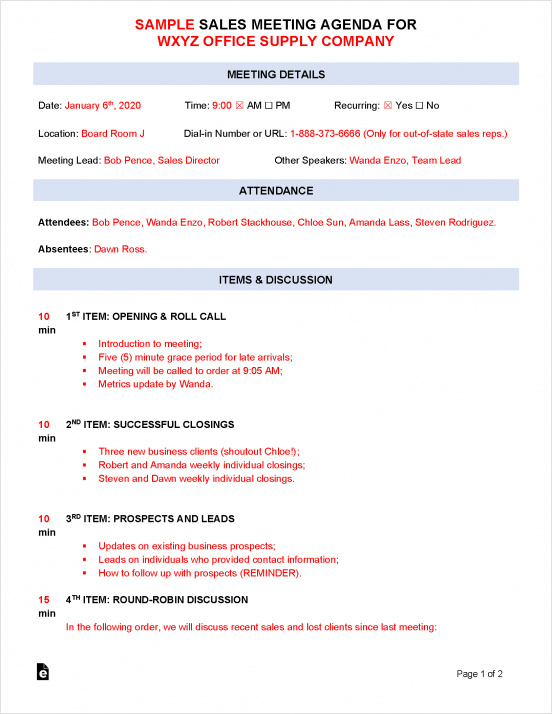
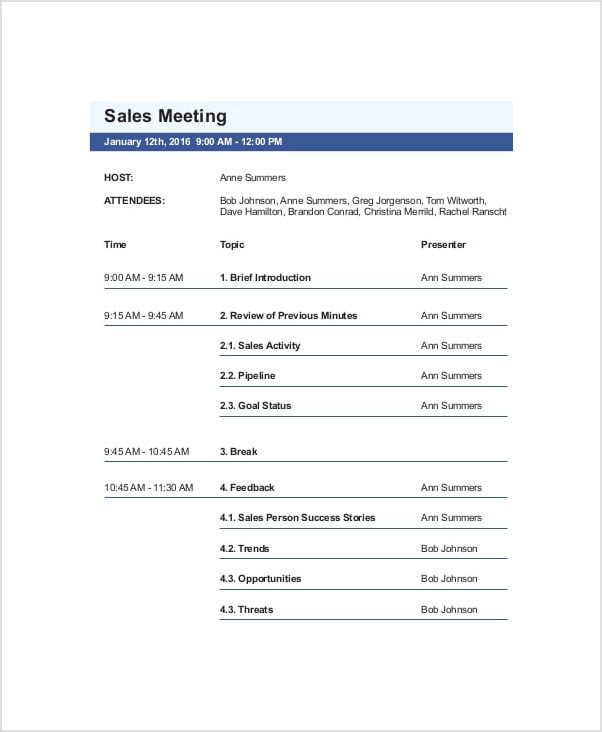
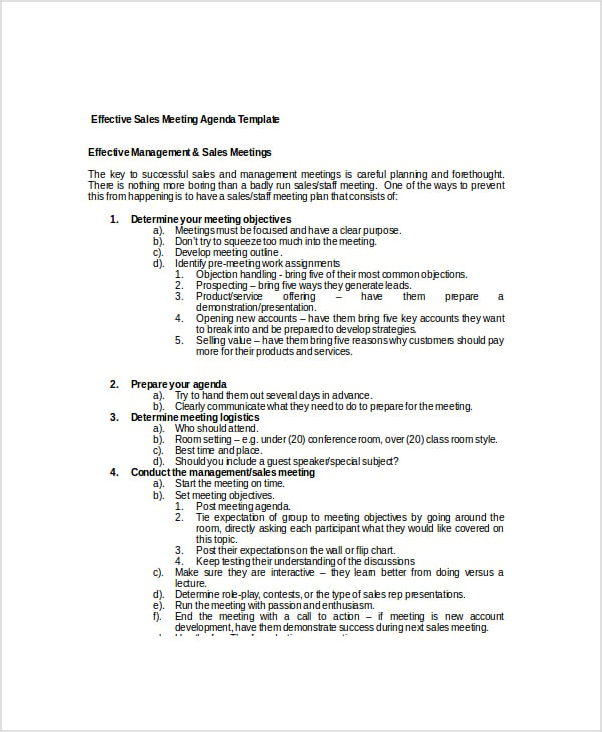
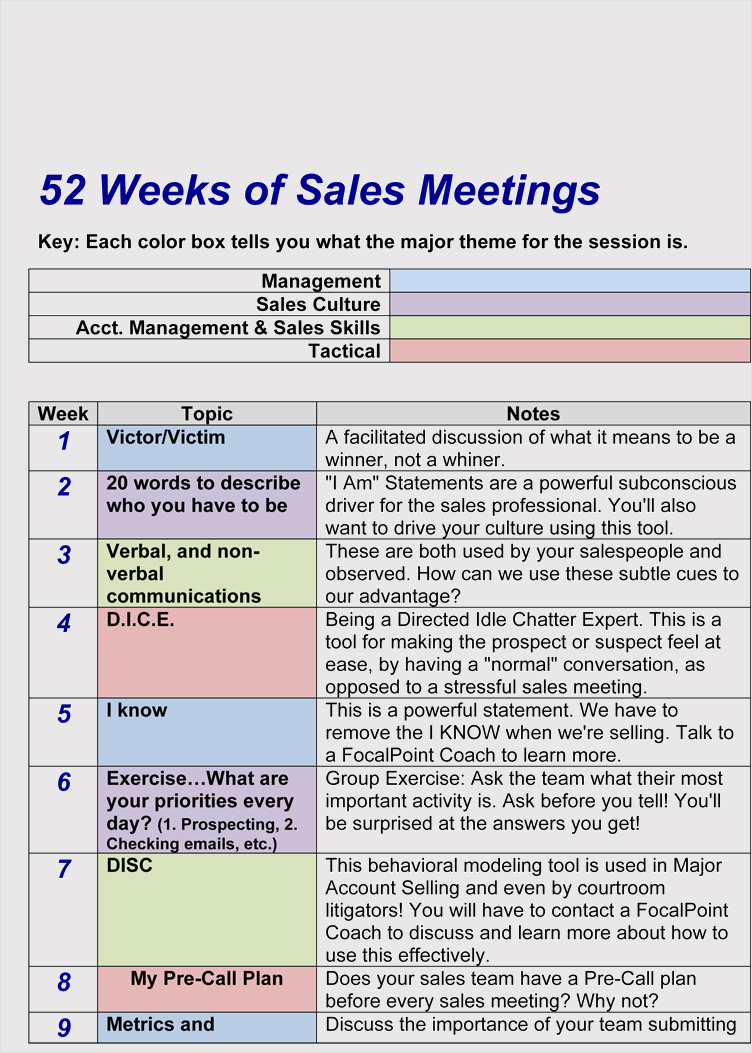
Conclusion
A well-planned sales meeting agenda is crucial for ensuring a successful and productive meeting. By clearly defining the meeting objective, prioritizing agenda items, and allocating sufficient time for each item, you can keep the meeting focused and achieve the desired outcomes. Remember to assign responsibility, prepare discussion points, and include actions and follow-up to maximize the effectiveness of the meeting. With a well-crafted sales meeting agenda, you can drive sales performance and foster a collaborative and motivated sales team.
Sales Meeting Agenda Template Excel – Download
